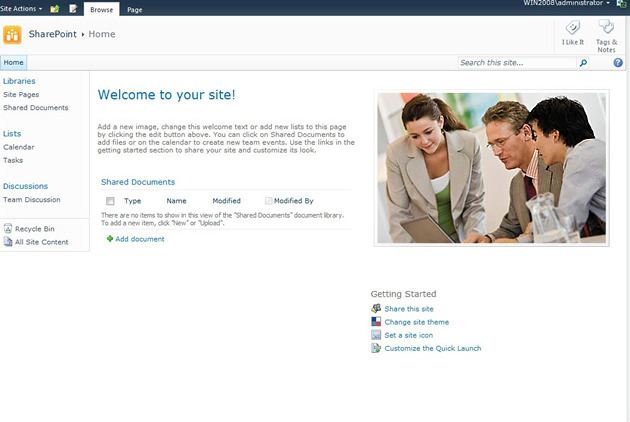
Why we need to join up physical and digital workplaces
I went to an exhibition today on Redefining Working Life, looking at changing workplaces and work-life balance.

Two things struck me; one was a dog endlessly scrolling through its iPad apps. The other was footage of evolving office design.
There’s lots of excitement about flexibility in the physical workspace, but this is largely underpinned by flexible digital working: we’re not anchored to a specific desk by a filing cabinet or in-tray anymore. All the same, the two worlds do intersect, and there doesn’t seem to be enough cross-border thinking at the moment to give employees a joined-up experience between their physical and digital workplace experiences.
For example, there was a video of a German workplace design company discussing a new flexible working campus for Vodafone. They talked with excitement about how people could work in different zones during the day, with no fixed desk. When one of them asked about losing the personal identity that comes with photos and plants on your desk, the response was that people would have to get used to it; it was the price of greater freedom.
To me this missed the obvious digital answer, that our family photos are now on our phones and on the wallpaper of our tablets – we don’t to express it in a gold-rimmed frame anymore – but we do need to have answers to these psychological needs.
Similarly, as offices decline as a point of company identity, they need to be replaced by equally strong identity online for people who may never visit the corporate HQ. Universities are struggling in the same way, as students increasingly challenge the need to be present on campus, as highlighted in the Leesman Review (download the October 2013 edition [PDF; 1.9MB]).
Conversely, when people move away from their usual desk, ergonomics don’t go out of the window. A cafe area with bar stools may look cool, but it’s a terrible place for a long session of typing on a laptop. Comfy sofa areas become cluttered with power cables straining to reach buried sockets, and backs are equally strained as people try to use laptops on low coffee tables. You might argue that the sofa areas are for talking face to face, and they are, but work conversations often involve the digital as an intermediary to illustrate ideas and capture decisions as you go.
Workplaces are getting better, but we’re still a long way off from offices that easily blend physical and digital. How ironic that SharePoint 2010 team sites always began with an image of three people crowded round a single laptop.

What they really needed was cable-free connection to large screens, digital coffee tables (remember Microsoft’s first use of ‘Surface’?), perhaps even digital whiteboards with handwriting recognition and mirroring onto tablets, and a comfortable way to invite virtual colleagues to join the water cooler discussion. Then we’ll really be re-defining the office.








Martin White
I agree with your observations but what concerns me is that the discussion about digital workplaces is confined to the ‘office’ when people also work front of house in banks and other organisations, in laboratories (there are over 100,000 chemists in Europe) and in a wide range of manufacturing environments. Given that these are critical in the development of economic growth shouldn’t we be looking beyond the office?
Sam Marshall
Hi Martin
We definitely should be looking beyond the office. I think there are good discussions on this within the digital workplace field, particularly around the use of mobile in retail, sales and customer service. Barclays and Standard Chartered in the Banking sector are both interesting examples.
There’s much more to be said about other roles too: In factories ‘plasma’ screens still seem to be popular with internal comms folk as a digital channel, though they are depressingly one-way.
A good topic for another post – but this one was in response to the exhibition, and it was the office part that stood out!